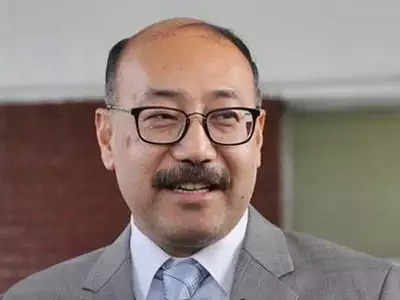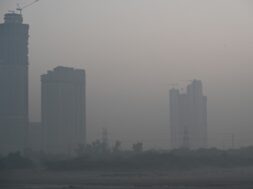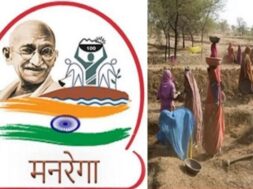
NEW DELHI, Mar 10: Speaking during the inauguration of the South Asia Group of Energy (SAGE) at the Research and Information System (RIS) for developing countries, Harsh Vardhan Shringla the Foreign Secretary congratulated RIS for undertaking this timely and useful initiative and said energy cooperation has the potential to be a key pillar of regional cooperation and integration and was sure that SAGE would contribute significantly towards realising this potential
He further said that, in light of this, India is working hard to promote the sub-region of Bhutan, Bangladesh, Nepal, Myanmar, and India as an energy hub, and that Sri Lanka should be added to make it complete. India is leading the way in promoting a regional solution to energy needs, whether through conventional sources, hydropower, solar, wind, or even petroleum products. India is the region’s largest producer and user of energy, so it’s only natural for it to be at the forefront of any energy initiative aimed at making energy more affordable, available, and clean.
There is a large variance in energy resource endowments and energy demand in our area. While India and Bangladesh account for the major natural gas and coal resources, Bhutan and Nepal have large hydropower resources. Sri Lanka has a lot of potential for solar and wind energy. In reality, all of the countries have a lot of renewable energy potential. A mutually beneficial model of cooperation in South Asia could be created by leveraging complementarities in electricity demand, load curves, and resource endowments.
One of the most dynamic areas of cooperation between India and Bangladesh is energy connectivity. Cooperation in the hydrocarbons market is expanding to include the entire value chain of the oil and gas industry. In 2019-20, the bilateral hydrocarbon trade was worth USD 337.3 million (USD 322.32 million from April-November 2020).
India is discussing the construction of a 765kV power interconnection from Katihar, India, to Parbatipur, Bangladesh, and then to Barnagar, India, which, once completed, will strengthen grid interconnection in the area. India is assisting Bangladesh in the construction of transmission lines and power evacuation facilities from the forthcoming Rooppur Nuclear Power Plant through concessional credit. The 1320 MW Maitree Super Thermal Power Project is being built by India in Bangladesh, with Unit 1 expected to be operational in November 2021 and Unit 2 in March 2022.
Bhutan, which is projected to have a hydropower capacity of 30 GW, imports approximately 1.8 GW of hydropower per year. The 720 MW Mangdechu Project was inaugurated, bringing the total installed capacity of hydropower projects built with assistance from the Government of India to over 2100 MW. Punatsangchhu-I and II, as well as the 600 MW Kholongchhu project, are all currently in the works.
The SAARC Framework Agreement on Energy Cooperation in Electricity was signed in Kathmandu at the 18th SAARC Summit, but it has yet to enter into force due to Pakistan’s failure to ratify it. Separately, India suggested using solar energy to electrify one village in each of the SAARC countries.
India is working to make it easier for hydrocarbons to move around the region. The first cross-border petroleum products pipeline in South Asia, running from Motihari in India to Amlekhganj in Nepal, has saved Nepal Oil Corporation INR 1 billion. India is now looking to extend the project to Chitwan, as well as construct a new pipeline linking Nepal’s Silguri and Jhapa.
Through more than 25 transmission interconnections, India has supplied around 700 MW of power to Nepal, while Nepal may begin exporting power in the near future. With GoI assistance, the first high-capacity cross-border power transmission line was completed and upgraded to 400 KV from Dhalkebar in Nepal to Muzaffarpur in India, and more cross-border high-capacity connections are planned. The 900 MW Arun-III hydroelectric project in northeast Nepal is being built by Satluj Jal Vidyut Nigam Limited. The 900 MW Upper Karnali hydroelectric project in western Nepal is being built by a consortium led by GMR.
In the field of energy cooperation, India and Myanmar have a strong and growing relationship. Myanmar has the potential to be a key energy partner because future offshore gas discoveries can be piped to India. Myanmar has the highest Indian investment in this sector of any country in Southeast Asia, with over US$1.2 billion.
Both India and Myanmar have signed a memorandum of understanding on power cooperation with Myanmar. India is currently supplying 3 MW of power to Myanmar through the Moreh (India)-Tamu (Myanmar) Low Voltage Interconnection. There have been discussions about providing Myanmar with a low-voltage radial electricity supply. High-capacity voltage grid interconnection between India and Myanmar has also been discussed. Myanmar’s rural electrification was proposed by REC Transmission Projects Company Limited.
India is looking at ways to improve Myanmar’s electricity supply. According to projections, power demand will increase from 3700 MW today to 12,200 MW in 2030.
With Sri Lanka, India has been working on a number of energy-related projects, including the construction of a 300-MW LNG-based power plant at Kerawalapitiya in Sri Lanka. In the Mannar area, there is a lot of room for cooperation in terms of harnessing wind energy. India has also provided a US$ 100 million line of credit for solar power project construction, which will help Sri Lanka massively scale up solar power production and deployment. The proposed cooperation between India and Sri Lanka on the creation of the Oil Tank Farm in Trincomalee is a win-win proposition that will help Sri Lanka construct petroleum reserves and resolve supply and price volatility.
Before concluding, he said, “India speaks of being self-reliant; it does not support a self-centred scheme,” referring to Prime Minister Narendra Modi’s call for Atmanirbhar Bharat. There is a concern for the happiness, cooperation, and stability of the whole world in India’s self-reliance. In this regard, India’s energy cooperation with South Asia is a one-of-a-kind model of symbiosis in the region, complementing demand and supply while also strengthening economic ties between our neighbours.
(Venkatesh Iyer)














